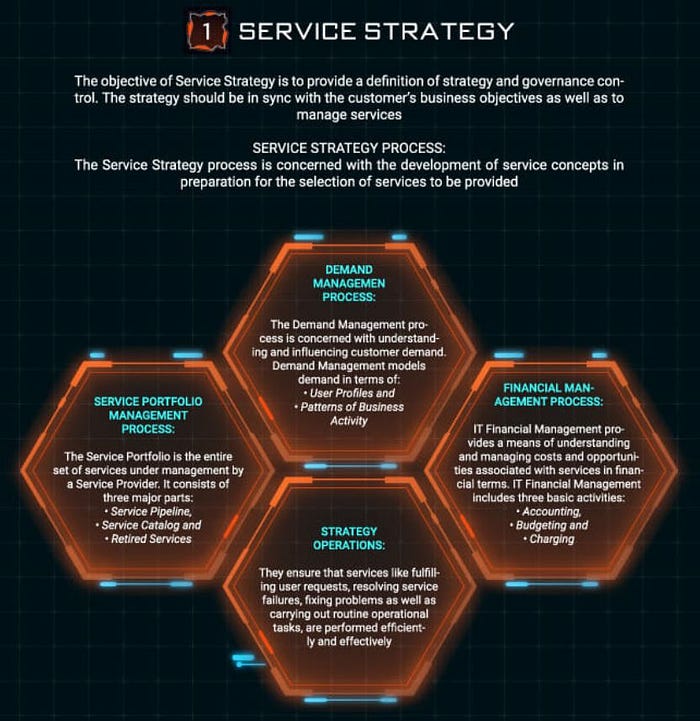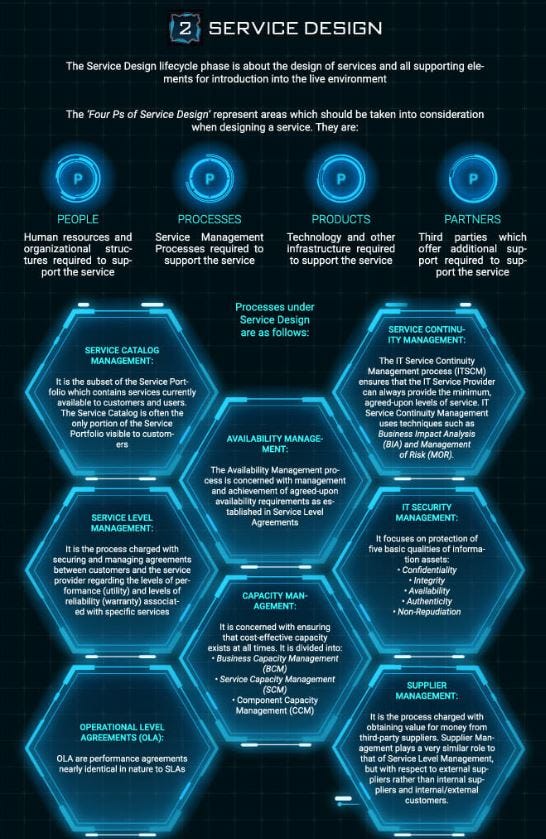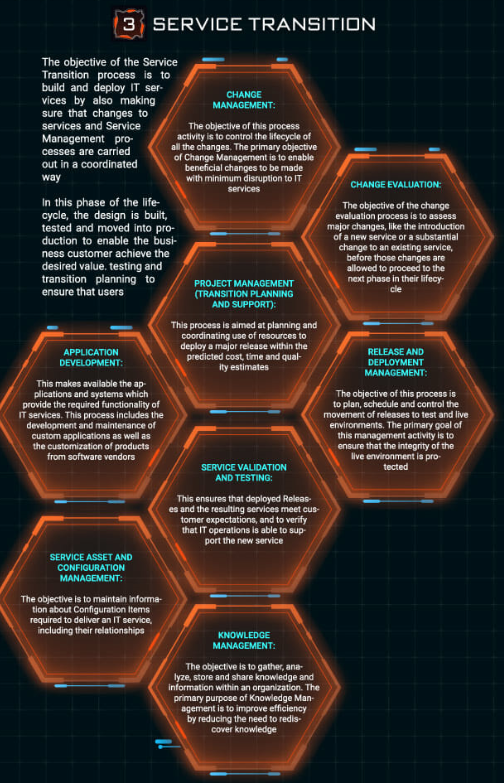Enhancing Business Efficiency with IT Processes

In IT management, two prominent process frameworks, ITIL (Information Technology Infrastructure Library) and CobiT (Control Objectives for Information and Related Technologies), play crucial roles in optimizing services and governance. ITIL focuses on aligning IT services with business needs by offering detailed practices across IT service management. In contrast, CobiT provides a governance and management framework aimed at aligning IT with business goals, managing risks, and delivering value.
Together, these frameworks help organizations enhance service delivery and maintain robust governance, making them essential tools for achieving IT operational excellence. In this article, we will explore each of these frameworks in more detail.
ITIL Framework Overview
The ITIL (Information Technology Infrastructure Library) framework provides a comprehensive set of best practices for IT service management (ITSM). It aims to align IT services with the needs of the business, ensuring that IT supports core business processes efficiently and effectively.
Core Components of ITIL
ITIL is structured around five core components, each focusing on different aspects of IT service management:
1. Service Strategy
This component focuses on defining the services that the organization will offer and the capabilities required to deliver them. It involves understanding customer needs, market conditions, and the strategic objectives of the business.

2. Service Design
Service Design ensures that new and changed services are designed effectively to meet customer expectations. It covers aspects such as service level agreements (SLAs), capacity management, availability management, and IT security management.

3. Service Transition
This phase is concerned with managing changes to IT services, ensuring that they are smoothly transitioned from development to production. It includes change management, release and deployment management, and service validation and testing.

4. Service Operation
Service Operation focuses on the day-to-day management of IT services. It includes incident management, problem management, event management, and access management, ensuring that services are delivered effectively and efficiently.

5. Continual Service Improvement (CSI)
CSI aims to continually improve the effectiveness and efficiency of IT services and processes. It involves identifying and implementing improvements to services, processes, and overall IT performance.

Benefits of Implementing ITIL
Adopting the ITIL framework can bring numerous benefits to an organization, including:
- Improved alignment between IT and business objectives
- Enhanced service delivery and customer satisfaction
- Increased efficiency and reduced costs
- Better risk management and compliance
- Continuous improvement of IT services
Service Desk Management
Effective service desk management is essential for maintaining smooth IT operations and ensuring that end-users receive timely support. By implementing structured processes and leveraging modern technologies, businesses can enhance their service desk capabilities, leading to improved user satisfaction and operational efficiency.
The art of progress is to preserve order amid change and to preserve change amid order. - Alfred North Whitehead
Key Components of Service Desk Management
Incident Management
Incident management involves identifying, logging, and resolving incidents to restore normal service operations as quickly as possible. A well-defined incident management process helps minimize downtime and ensures that issues are addressed promptly.
Request Fulfillment
Request fulfillment focuses on managing service requests from users, such as access to applications, software installations, or information inquiries. Efficient request fulfillment processes ensure that user needs are met in a timely manner, contributing to overall productivity.
Problem Management
Problem management aims to identify and resolve the root causes of recurring incidents. By analyzing incident trends and implementing permanent solutions, businesses can reduce the frequency of issues and improve service reliability.
Knowledge Management
Knowledge management involves creating, sharing, and maintaining a repository of information that can be used to resolve incidents and fulfill requests more efficiently. A robust knowledge base empowers service desk agents and end-users with the information they need to solve problems quickly.
CobiT Framework Overview
The CobiT (Control Objectives for Information and Related Technologies) framework provides a comprehensive approach to managing and governing enterprise IT environments. It is designed to help organizations achieve their objectives for the governance and management of enterprise IT by providing a set of best practices, tools, and models.
Understanding CobiT Framework
CobiT is a globally recognized framework that offers a structured approach to aligning IT strategy with business goals. It encompasses a wide range of IT processes, ensuring that all aspects of IT management are covered, from planning and organization to acquisition, implementation, delivery, support, and monitoring.

Key Components of CobiT
The CobiT framework is built around several key components:
- Framework: Organizes IT governance objectives and good practices by IT domains and processes, and links them to business requirements.
- Process Descriptions: A reference model and common language for everyone in an organization. The processes map to responsibility areas of plan, build, run, and monitor.
- Control Objectives: Provides a complete set of high-level requirements to be considered by management for effective control of each IT process.
- Management Guidelines: Helps assign responsibility, agree on objectives, measure performance, and illustrate interrelationships with other processes.
- Maturity Models: Assesses maturity and capability per process and helps to address gaps.
Benefits of Implementing CobiT
Implementing the CobiT framework can bring numerous benefits to an organization, including:
- Improved alignment of IT with business goals.
- Enhanced risk management and control over IT processes.
- Increased efficiency and effectiveness of IT operations.
- Better compliance with regulatory requirements.
- Clearer understanding of IT costs and benefits.
Unlock the secrets of the CobiT Framework with this exclusive YouTube video we’ve handpicked just for you. Watch now!
In conclusion, strengthening support through the enhancement of IT Business Processes is pivotal for driving business efficiency and achieving sustainable growth. By integrating advanced IT solutions and streamlining workflows, organizations can not only optimize their operations but also foster innovation and agility. As businesses continue to navigate the complexities of the digital landscape, investing in robust IT Business Processes will remain a cornerstone for success, ensuring that they stay competitive and responsive to ever-evolving market demands.